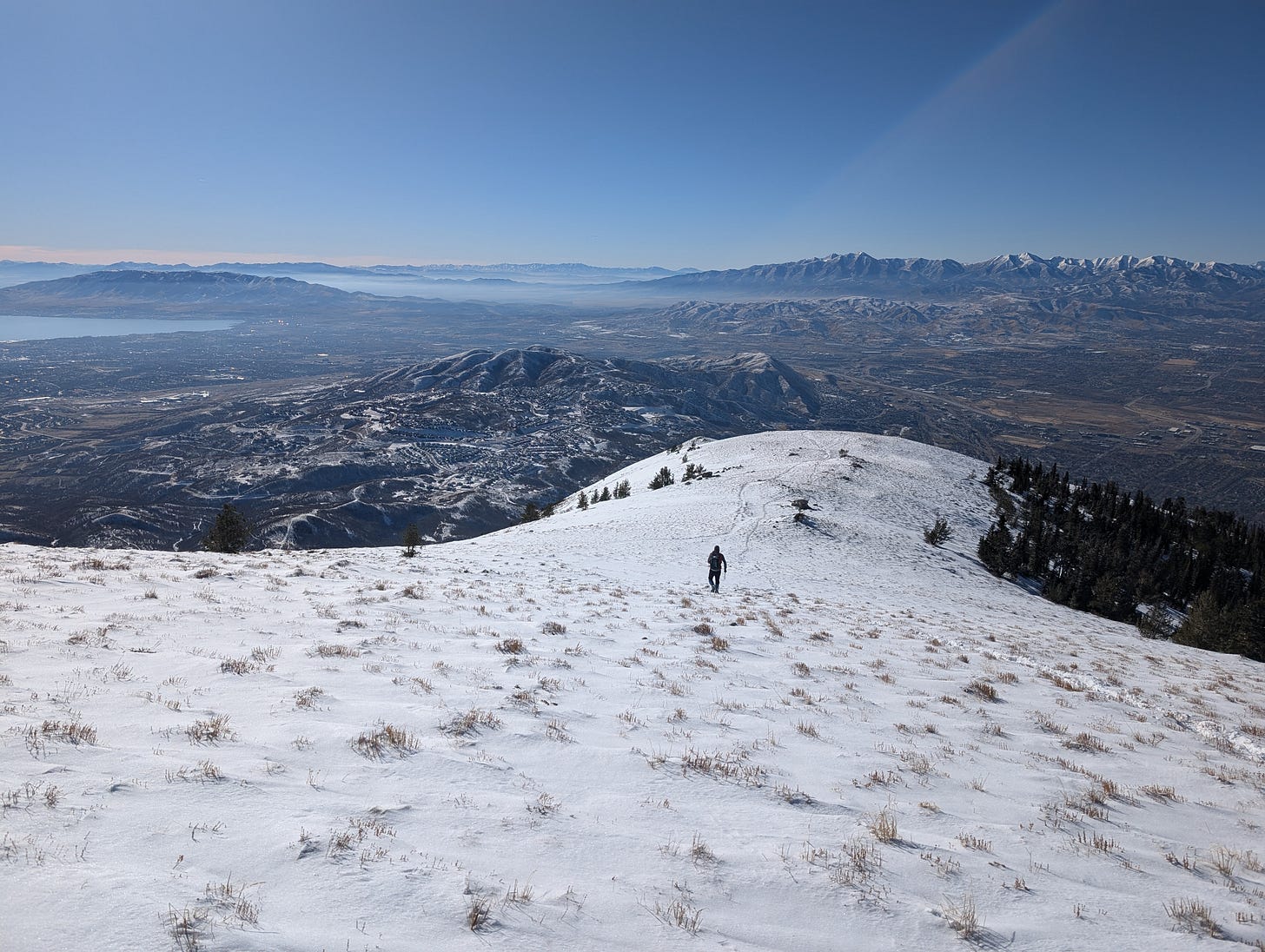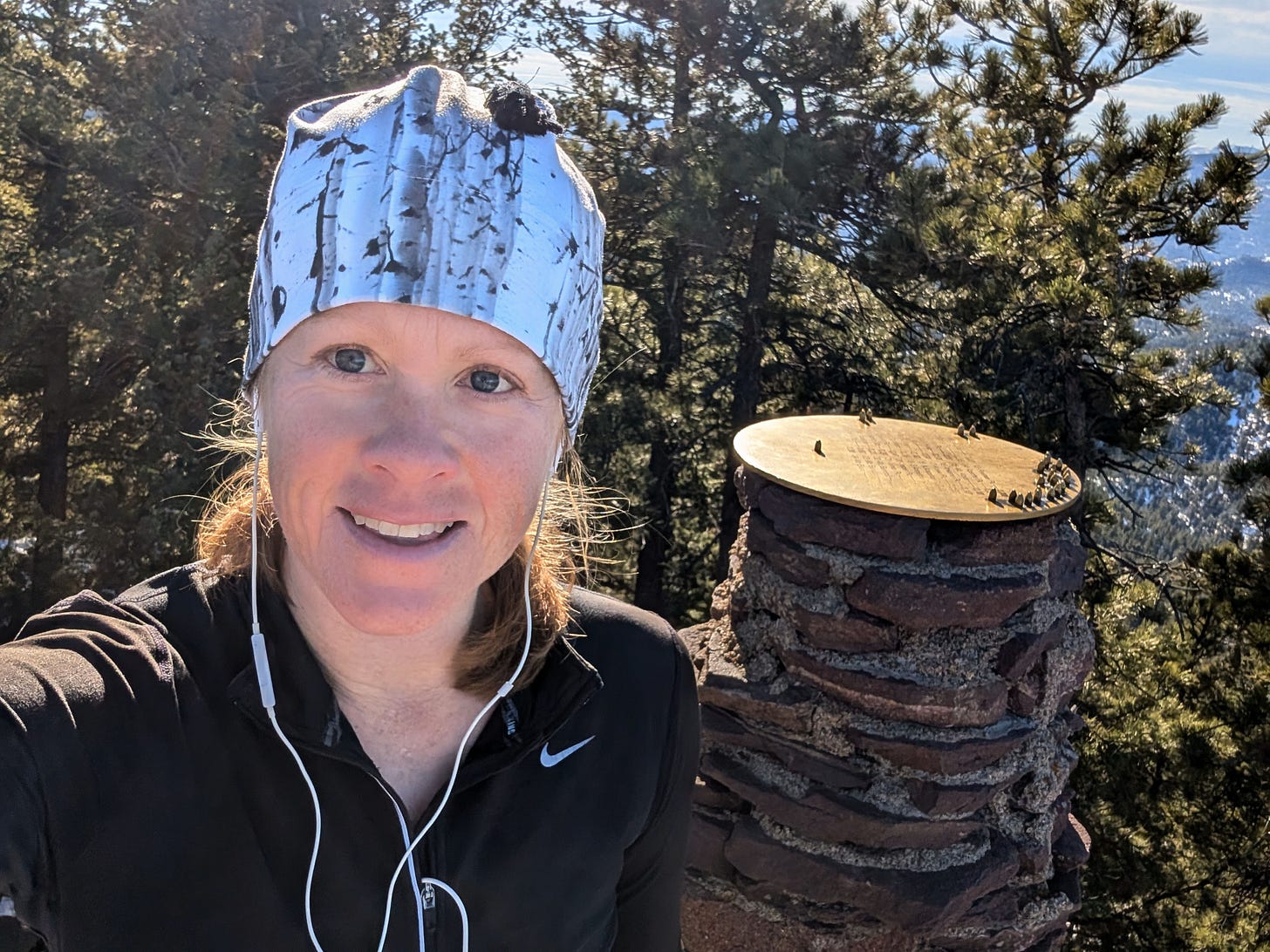The title of this post is a reference to the 1991 movie “Fried Green Tomatoes.” It was a cultural moment that you need to be GenX or older to understand, which is why I think it especially resonates with our demographic now in midlife. In the movie, Kathy Bates is a dissatisfied middle-aged housewife who befriends an elderly woman in a nursing home, and together they bond over stories about two women who run a cafe in the 1920s. Through this friendship, Kathy Bates learns she no longer needs to be timid and small. She needs to roar, to speak out about injustice. She adopts an alter ego when she feels empowered: Towanda.
In a memorable scene, Kathy Bates waits for a driver to pull out from a parking spot when two hairspray blonds in a Beetle zip in to take the spot. When Bates patiently informs the young women she had been waiting for the parking spot, one sasses, “Face it, lady, we’re younger and faster.”
So Kathy Bates backs up her car, pauses, and proceeds to bash the rear end of the Beetle five or six times. “Face it girls,” she deadpans. “I’m older and I have more insurance.”
Towanda!
I loved “Fried Green Tomatoes” as a preteen and viewed Kathy Bates’ character as #lifegoals before I became old enough to understand just how much car insurance costs. And although parts of the film haven’t aged so well, I still love a good tale of middle-aged female empowerment. Who can forget Jessica Tandy’s delivery of “There's nothing wrong with you. You just need to get you some hormones, honey.”
I’ve been reading “The Upgrade: How the Female Brain Gets Stronger and Better in Midlife and Beyond,” a book my sister recommended. Author Louann Brizenine makes the case that menopause doesn’t have to be a steep decline into decrepitude — in fact, much about the shift in hormones that comes with menopause can be an upgrade. Although I don’t know exactly where I am in the perimenopause journey, it’s become clear that I’m somewhere in the transition. Since I already have nearly a decade of hormonal struggles behind me with thyroid disease, I’ve been dreading the loss of estrogen and progesterone. But throughout “The Upgrade”, Brizenine makes menopause sound like an empowering opportunity, which I can get on board with!
“Keeping engaged with your life is what it is all about at this stage! Your brain now isn’t having to have these changes every day of the month with the fluctuating hormones that are washing in and washing out. So I say baby, grab the brass ring and enjoy it! You have a whole opportunity to have a new purpose in life and a new clarity of thought.”

A resolution that has become clear to me in recent weeks is that I don’t want to be timid and small. I want to be strong. I want to speak my truth and not fret about the parasocial relationships and “clout” I might lose. I want to respond to injustices when I see them and not fret about the relatively minor consequences for myself. I want to be physically and mentally strong for the hard times that are doubtlessly coming. I don’t want to be the autoimmune-weakened, anxiety-ridden asthmatic who no longer aspires to soul-rending adventures. I want to throw heavy weights around and pull my body up mountains and run like I am the master of gravity and roar!
Towanda!
All of this is much easier said than done, of course. One of my simpler resolutions — reclaiming my love of running — has felt increasingly out of reach. It’s just that I’m getting clumsier and my sense of confidence and control is slipping away. So many people seem to understand how to “drive” their bodies without a second thought, but I feel like my wheels are misaligned, my bearings are loose, and my suspension is bottomed out. I feel wobbly and unbalanced, like at any moment, I might veer into the dirt for no reason. If I don’t pay a whole lot of attention, a foot will catch a rock or a hip will rotate and then I’m going down. Most of this misaligned proprioception is in my brain but there are also issues with my body and my hormones aren’t helping and it all feels like such a complex puzzle. Too complex. Yet I’m unwilling to give up, now more than ever.
For, I don’t know long — probably more than a decade — I’ve floated the idea of having a physical therapist conduct a running gait analysis so I at least have a better idea about which parts need fixing. But I haven’t gone through with it because I hate being judged, and admittedly, I’m terrified of treadmills. Once the belt starts moving faster than about 6 mph, I’m sure I’ll go flying off the edge. No respectable running expert is going to let me do my ultra shuffle, and it’s not like I ever actually learned how to run. I’m here because I want to learn! I’m a complete beginner. Oh, about those 60-odd ultras I’ve finished? Those don’t really count. Let’s pretend they didn’t happen.
On Wednesday, I was back at the PT for the second time this week to address my new elbow injury. At least I think it’s new. I was still healing from the Sept. 5 soft-tissue injury … or maybe it was the hit I took on Sept. 27 in the Grand Canyon … when I smacked that same elbow in a bike crash. It’s still quite swollen, bruised, and painful nearly two weeks later. I’m finally getting an MRI that was originally ordered for the Sept. 5 incident, which I convinced myself I didn’t need, but how do I keep falling on this same elbow? Seriously?!?
My beloved physical therapist at Build Sports Performance Lab in Louisville is retiring and it’s genuinely distressing for me. Don’t leave, Sue, I need you! But now Beat and I have several prepaid sessions to use up, so at the front desk I casually asked about a running gait analysis. The assistant cheerfully replied that they just hired a new physical therapist and she’s a “biomechanical genius” and I can see her tomorrow!
So I booked the appointment and left with about two hours to burn before work. I decided to head to Rocky Flats for a “practice run” where I at least tried to keep a tempo pace. The trails crisscrossing Rocky Flats are about as easy as off-pavement running can be — it’s mostly gravel doubletrack with a few rocky sections, but nothing overly technical. There’s minimal elevation gain — here I can do a 10-mile run with only 500 feet of climbing — so it should be a decent place to get my running legs under me.
It was, in my view, a terrible failure. I felt so unsteady and tentative that I could barely hold an 11-minute-mile pace on the flats. My heart rate was low because I wasn’t working that hard, but anything faster made me feel nauseated. The ground was pulling me toward it and I felt like I was constantly stumbling. In short, I was having a mild “vertigo” day. Vertigo days aren’t every day for me, but they’re pretty unnerving when they happen.
So I showed up at Build on Thursday morning filled with dread. I was sure I was going to meet a young, aggressive trainer who was used to working with elite college athletes and would roll her eyes at every one of my concerns. When the PT came out, I was surprised to see she was someone closer to my age — as it turns out, she’s 50. Nicole took me in for an interview and one of the first questions she asked me was about perimenopause. It only got better from there. I rehashed much of my embarrassing medical history, starting with a badly sprained ankle at age 19 when I rolled my ankle while carrying a television down a set of concrete stairs. I gave her a rundown of my mental health issues and chronic illnesses. It was a long list. A 45-year-old runner, even a less clumsy one, comes with a lot of baggage. Still, Nicole wasn’t frustrated; she was elated. She frantically scribbled notes while repeating, “It’s all part of the puzzle” and “That’s so interesting.” She apologized for her rapid-fire questioning method and told me she was coping with ADHD.
“Yes!” I thought to myself. “Thank you, fellow neurospicy warrior. We’re going to get along just fine.”
We did several balance exercises that proved I hadn’t been lying about having below-average balance. The running gait analysis wasn’t nearly as terrifying as I anticipated. Nicole told me she didn’t need me to run fast. Since faster running wasn’t my goal, a speedy pace wouldn’t be helpful. She let me lope along at a comfortable jog while she took videos and made notes. The machine collected a plethora of data points that she promised to comb through to give me a more in-depth analysis.
The initial observations were fairly expected if wildly imperfect. I’m a heavy forefoot striker, no surprise there. Both of my ankles are loose and weak, but my left ankle is particularly wonky, and this leads to overpronation. My right leg is notably weaker and more imbalanced than my left leg, which has long been a problem that I believe might stem from a right knee cartilage injury I had in my 20s and mild osteoarthritis that persists. I’ve been compensating for so many years that a 2019 DEXA scan revealed I had 1.1 pounds more muscle in my left leg, and I haven’t done much to correct that imbalance. Also, I excessively arch my spine. Nicole thinks this might stem from injury and weaknesses that followed my run-in with a truck while cycling in 2021. But this is something I need to address immediately by strengthening my core and loosening my hip flexors.
So many issues! I felt like a whole mess. But Nicole was excited. “It’s like clay,” she said. “You’re still malleable.”
Nicole e-mailed me tonight to tell me she spent two hours poring over the data and had “much to tell you” but that her brain was cooked for the night. Yes, fellow midlifer, you protect your energy! She’s going to help me put together ideas for training but if I’d like, I can continue to work with her. I never imagined hiring a running coach, but if I can find one who could care less about improving my race times and everything about helping me grow into the strong and confident if slow runner I’ve always wanted to be, then YES PLEASE!
It’s a small thing in the scheme of things, but I’ve never not felt like a flailing toddler while running. With a few simple tools I see an opportunity to finally grow up, to say, “You know what, I may not be Born To Run, but damn it, I’m a runner.” And that feels empowering.
Towanda!






Exciting! Maybe not so uplifting as the book you mentioned, but very readable fact based perimenopause information (I consider it required reading): The Menopause Manifesto (don't let the name scare you off) by Dr. Jen Gunter.
Congrats on starting this journey of many things. Every woman's journey through menopause is unique. I guess I was lucky. I felt nothing, then poof, no more periods (I can't say why, but when that last period ended I knew it was the last one). I've felt less concerned about pleasing people and looking at life with more perspective. And more acceptance of not only myself, but others.